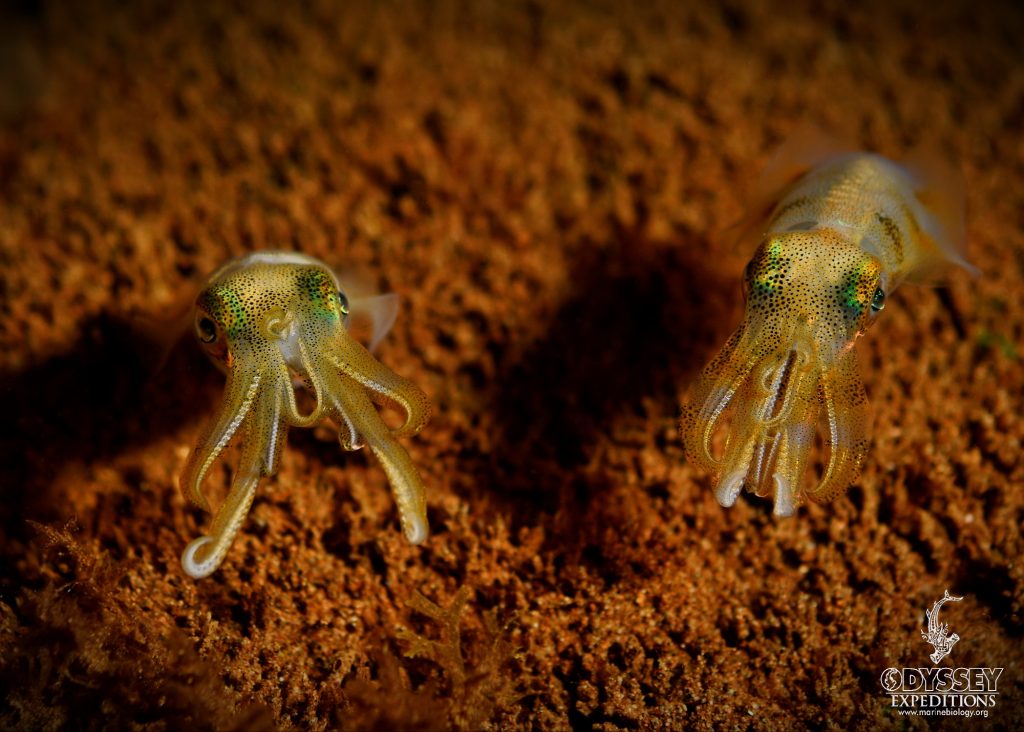
Sepioteuthis lessoniana
Bigfin Reef Squid – Sepioteuthis lessoniana – BfRS have a large oval fin that extends throughout the margins of its mantle.
- BfRS adapt to warmer temperatures by laying more eggs, making them a good indicator species for climate change.
- The babies resemble miniature adults and are remarkable for already having the capability to change body coloration upon hatching.
- BfRS have the fastest recorded growth rates of any large marine invertebrate, reaching 600 g in only four months. They are a short-lived species, with a maximum recorded lifespan of 315 days.
- Males have been observed to exhibit mating behaviors with other males. Some males have been found with numerous spermatophores embedded in their mouth funnels. Since BfRS distinguish sex by visual cues, this may be a form of deception. The smaller males (termed “female mimics” or “sneaker males”) might have assumed body patterning typical of females in order to trick larger males. Believing they are females, they will then waste their spermatophores on them.
- BfRS are one of the most commercially important squid species, and are widely consumed as human food.
Coloration
- Large chromatophores densely cover the upper surfaces of the head, mantle and arms with fewer on the sides.
- BfRS are capable of metachrosis – rapidly changing body coloration and patterns through voluntary control of chromatophores.
- They also possess iridophores that produces iridescent metallic greens and red when illuminated.
- They are also one of two squid species with leucophores that are a reflector-type structural coloration that reflects ambient light, such that they are white in white light, green in green light, and so on.
- BfRS are remarkable for having the ability to produce complex body patterns from the moment they hatch.
Etymology:
Sepioteuthis – Greek for “cuttlefish squid”
lessoniana: Named after René Primevère Lesson who was a 19th century French botanist and surgeon who collected it off the coast of New Guinea during the circumnavigational voyage of the French corvette La Coquille (1822–1825).